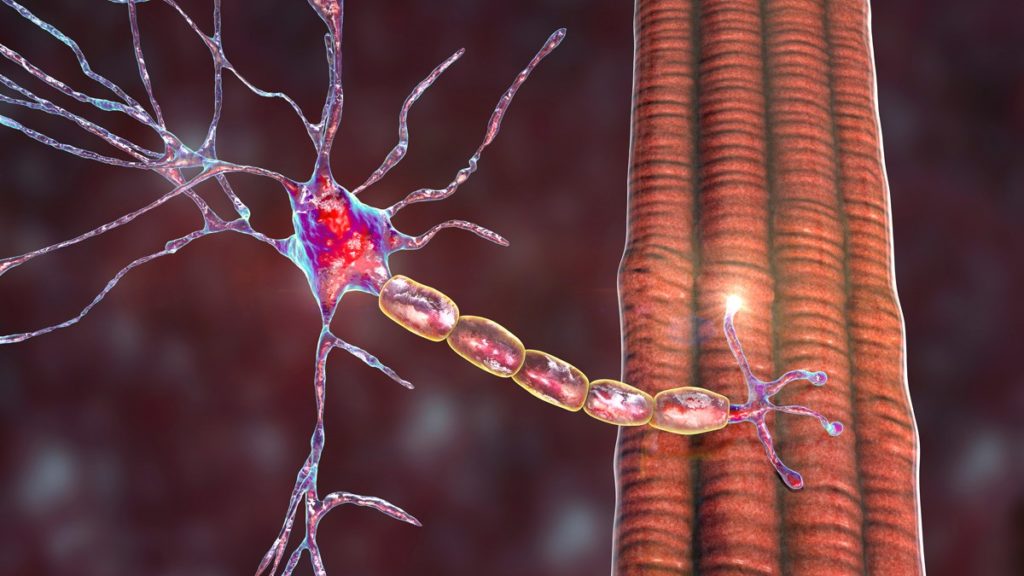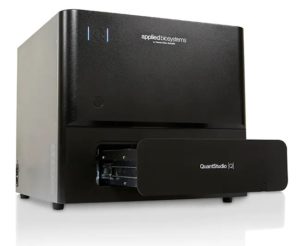Advancing Nucleic Acid Quantification for SMA Research
A Multiplex dPCR Protocol That Could Make Future Research Easier
Digital PCR (dPCR) is rapidly opening new doors in nucleic acid quantification. By segmenting a quantitative PCR (qPCR) reaction into thousands of microchambers, each with such a small reaction volume that it can be treated as statistically containing one or zero copies of the target, dPCR effectively digitizes the overall reaction. This enables quantification of extremely small amounts of genetic material with high precision and accuracy. Jiang et al used dPCR to study genes involved in spinal muscular atrophy (SMA)1 and developed a multiplex dPCR protocol that could make future research easier.

Spinal Muscular Atrophy (SMA) Research
Spinal muscular atrophy is a genetic disorder characterized by weakness and atrophy in muscles used for movement. It occurs through the loss of α-motor neurons that control the muscles, particularly those near the anterior horn of the spinal cord. Although its effects are most strongly felt in muscles around the spine, they can be found throughout the body, and muscle weakness worsens with age.
Subtypes of Spinal Muscular Atrophy
dPCR Experiment to Precisely Quantify Copy Numbers
There are at least four subtypes of spinal muscular atrophy with different ages of onset and severity. Research suggests that the different levels of severity are related to the number of copies of the SMN2 gene. SMN2 is a normally non-expressed paralog of SMN1, to which it is nearly identical but for a single base difference. However, when SMN1 is missing or damaged, SMN2 is expressed. Unfortunately, the difference between the two genes means that SMN2 cannot truly replace SMN1. SMN2 expression leads to spinal muscular atrophy, the severity of which is related to how many copies of SMN2 are present and how non-functional SMN1 is.
For this reason, Dr. Jiang’s team designed a dPCR experiment that multiplexes SMN1, SMN2, and additional reference controls to precisely quantify the copy number of each gene target. This experiment has a very small margin for error and success is only possible with the very high precision and sensitivity that dPCR can deliver.
The assay developed by Dr. Jiang et al used the Applied Biosystems™ QuantStudio™ Absolute Q™ Digital PCR System and FAM, VIC, TYE665, and TAMRA dyes to identify SMN1, SMN2, the combination of SMN1 and SMN2, and the control gene RPPH1 – designed to minimize cross-reactivity and provide a baseline against which to compare the copy numbers of both SMN1 and SMN2. By selecting a region shared by both SMN1 and SMN2, the combination target enabled Jiang et al. to compare results generated by the individual SMN1 and SMN2 assays and detect possible sequence deletions.
dPCR for Higher Resolution of Exact Genomic Contents
Dr. Jiang’s team proved their assay’s worth using both reference samples with known values and blinded clinical samples from patients. Comparing the SMN1- and SMN2-specific dPCR results to the copy number–invariant RPPH1 control gene enabled them to distinguish between copy numbers of one to six in the SMN1 and SMN2 genes. The dPCR method developed by Jiang et al. provides much higher resolution of the exact genomic contents of SMN1 and SMN2 than current qPCR methods, which often begin to lose resolution at around three copies of these extremely similar genes.
Advancement in Newborn Screening for SMA
This is excellent news in the context of newborn screening for SMA, which routinely use dried blood spots as assay material. A dried blood spot typically yields approximately 140 ng of genomic DNA (gDNA) in a volume of 50 μL. This study demonstrated that SMN1 and SMN2 copy numbers could be accurately measured with as little as 2–3 ng gDNA. This is in contrast to other dPCR assays that require 30–60 ng of DNA. In this way, the QuantStudio Absolute Q Digital PCR System can reliably be used for orthogonal validation of SMA carrier status or SMN2 copy number. As the technology is further developed, quadruplex dPCR could potentially become a primary SMA screening tool.
Superior DNA and RNA Quantification With Digital PCR
An Assay That Can Distinguish Numerous Copy Number Variations
The QuantStudio Absolute Q Digital PCR System delivers superior DNA and RNA quantification results with less hands-on time and less possibility of user error. With its power at their disposal, Jiang et al. created an assay that could distinguish numerous copy number variations related to spinal muscular atrophy more effectively than previous assays for this serious condition. Digital PCR can be performed with less sample, and it can enable high count or non-integer copy number variations to be resolved more effectively. As prenatal testing for SMA and similar conditions becomes more prevalent, tools like dPCR assays will become more and more necessary.
Learn more about the QuantStudio Absolute Q Digital PCR System
—
References
- Jiang L, Lin R, Gallagher S et al. (2020) Development and validation of a 4-color multiplexing spinal muscular atrophy (SMA) genotyping assay on a novel integrated digital PCR instrument. Sci Rep 10(1):19892.
—
For Research Use Only. Not for use in diagnostic procedures. © 2022 Thermo Fisher Scientific Inc. All Rights reserved. All trademarks are the property of Thermo Fisher Scientific and its subsidiaries unless otherwise specified. COL118317 0622
